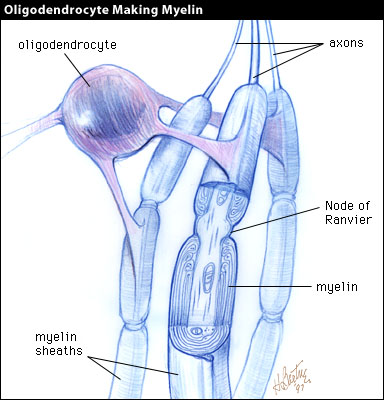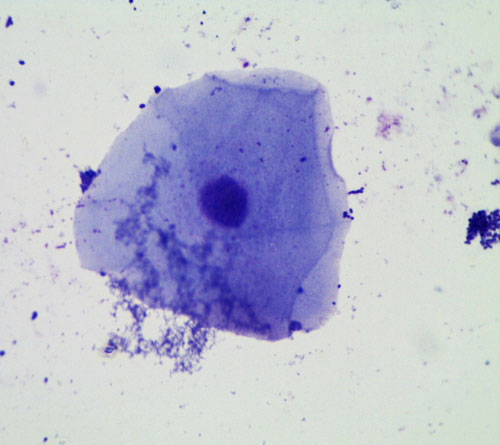- The cell bodies were the cupcakes. Some cut off the tops and dug out the middle, and some just dug into the top of the cupcake to create space for the insides of our neurons.
- Once we had space, in went the cytoplasm -- green Jell-O!
- We each chose a nucleus for our cells -- either a large jelly bean or a cherry sour
- Before putting the nucleus into the cytoplasm, we wrapped bits of endoplasmic reticulum around them -- fruit roll-ups
- On some parts of our endoplasmic reticulum, we sprinkled some ribosomes, which makes it rough endoplasmic reticulum (smooth endoplasmic reticulum doesn't have ribosomes). Most of us used red sprinkles for the ribosomes, but we discussed using nerds. Some sprinkled nerds into the cytoplasm to represent the ribosomes that float loosely separate from the endoplasmic reticulum.

Someone else's candy neurons; you can see organelles! - Next, we chose some mitochondria -- small jelly beans, about 3 per cell (most wanted the Starburst jelly beans, but a few used the Jelly Bellies)
- Some of us added lysosomes to our cytoplasm -- nerds
- One student who just got his braces put on used raisins for his organelles, since he couldn't have some of the gooier candies
- Then, we added the key parts of neurons that make them special compared to other cells:
- The axon was a Twizzler, and we wrapped it with myelin sheaths -- marshmallows
- The dendrites were bits of sour licorice straws
- We added tiny synaptic boutons, which are where the signal comes into the dendrites
- To represent the neurotransmitter crossing the synapse to send the message from one cell to the next, we used the frosting
Finally, we created a large circuit with our neurons, by connecting them together. We lined up our neurons and connected each axon to one of the next cell's dendrites (with neurotransmitter of course), and created a seven or eight cell circuit! Most of our neurons did not survive long after that, moving bit by bit into our digestive systems.
 |
| Diagram of two neurons showing their synapse |
To model how neuronal circuits work, we also lined up and held hands, to represent neurons connected together. A message started at one end of the circuit and traveled to the other end. The message was a hand squeeze, and each neuron had to send the message on to the next as soon as it was felt. The last neuron said "Got it" when the message got through. We all noticed that it was a bit slow the first time, but after repeating the process several times, the message passed very quickly. Just like when the neurons get myelinated, so their messages travel much faster.
We send some more messages down our circuit using the game "Telephone" where one person whispers a message to the next person, who whispers it to the next. One message sent that way arrived intact, but several others were changed or garbled. The nervous system has many features to prevent that kind of thing from happening. Its job is to send messages very quickly and very accurately all over our bodies.










